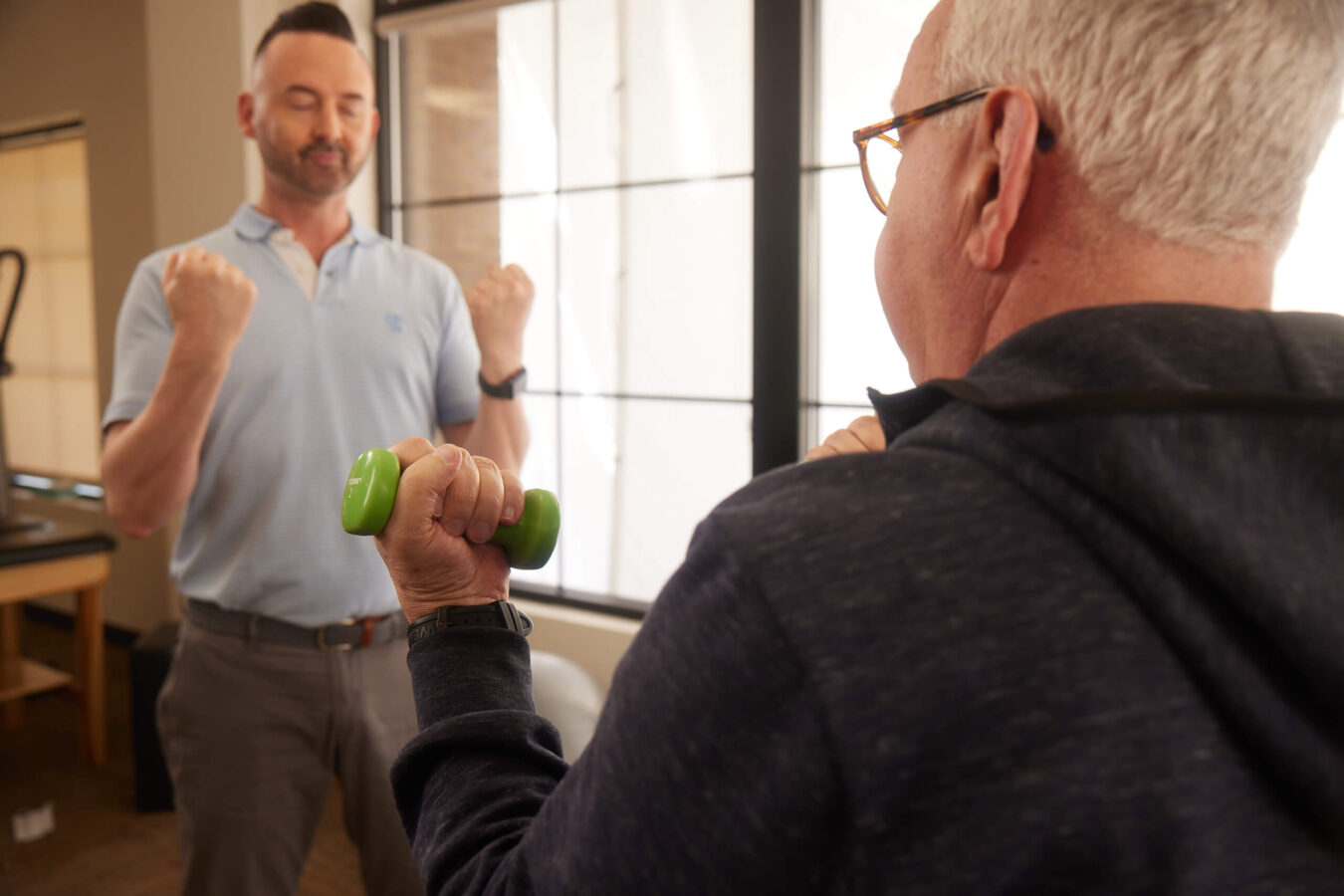
Medically reviewed by Misty Seidenburg
Do you notice your muscles feeling weaker than usual, even when you exert maximum effort? Is it challenging to do the tasks you used to do easily, like brushing your hair, lifting an object from a shelf, or getting up from a chair? If you’re having limb weakness, your first impulse may be to dial back your activity. If you have minor weakness or are slowing down with age, know these symptoms are common but not necessarily typical.
Getting moving may be the answer to help you regain strength and mobility. Physical therapy treatment for muscle weakness combines strengthening exercises with movements to increase balance and stability, building muscle safely and effectively as your plan progresses. Seeing a physical therapist at the early onset of muscle weakness can help prevent problems from worsening.
Muscle weakness is a complex condition with many potential causes. Sometimes, the cause is apparent—like a recent injury or a challenging workout. In other cases, physical exams and diagnostic testing are needed to determine why muscle weakness occurs. Symptoms can result from an illness or injury of the brain, nervous system, or muscles.
Conditions that may cause muscle weakness in arms and legs include:
If you have ongoing muscle weakness without a clear cause, share your concerns with your health provider to receive a proper diagnosis and appropriate treatment.
If you are a candidate for physical therapy to increase muscle strength, this is an overview of what you can expect from the process.
Physical therapy starts with an initial evaluation to assess your symptoms and understand how they impact your ability to move throughout your day—whatever that looks like for you. The physical therapist asks about your health history, symptoms, and lifestyle to understand how muscle weakness affects your daily life.
Once your evaluation is complete, they create a treatment plan to build muscle mass and address other musculoskeletal issues caused by compensating for weak areas. Progressive strengthening exercises are the foundation of treatment for muscle weakness. Exercises are specifically chosen to match the specific activities that are limited. These include movements for muscle strength, hypertrophy, or power.
These movements also help improve function and range of motion in nearby joints. Strength training’s benefits go beyond improving areas of weakness. Research shows that muscle strengthening is also good for overall health and helps prevent chronic disease and age-related muscle loss, or sarcopenia. Exercise helps build and maintain muscle mass in older individuals, which helps them age healthier, stay independent, and prevent other comorbidities.
Patients who experience muscle weakness due to aging, arthritis, and certain neurological conditions can benefit from exercises to improve balance and stability. These movements target all three systems in the body that play a role in our balance: visual, vestibular, and proprioception. This helps reduce the risk of falls.
You also receive a home exercise program (HEP) to complement your hard work in the clinic and maintain your results. As you become stronger from week to week, the intensity of your program increases to help you reach your goals and become more active and mobile.
Whether you’re an elite athlete or want to get stronger to return to walking your dog, physical therapy can help you reach your goals. Find a physical therapy clinic near you.
External Sources: